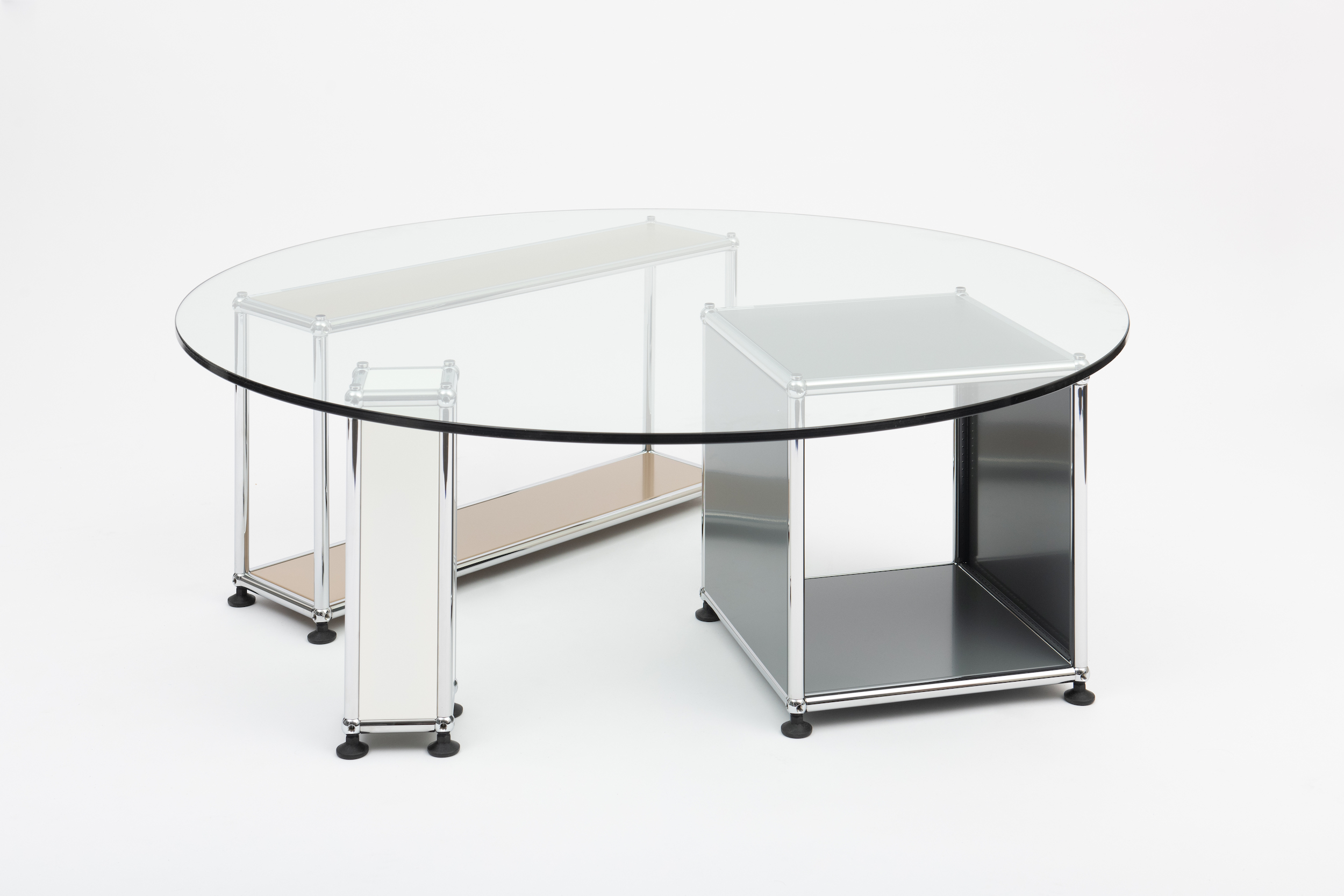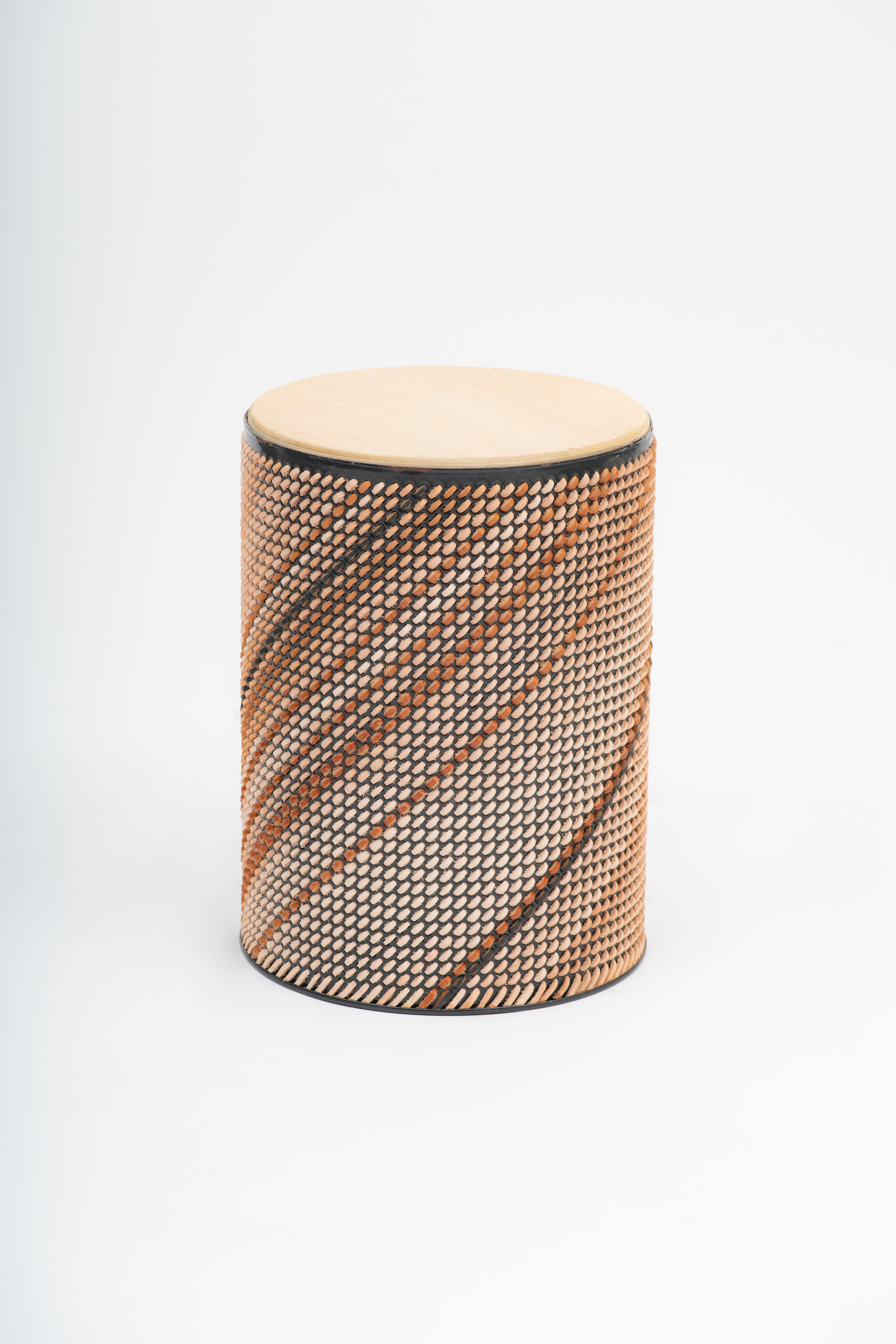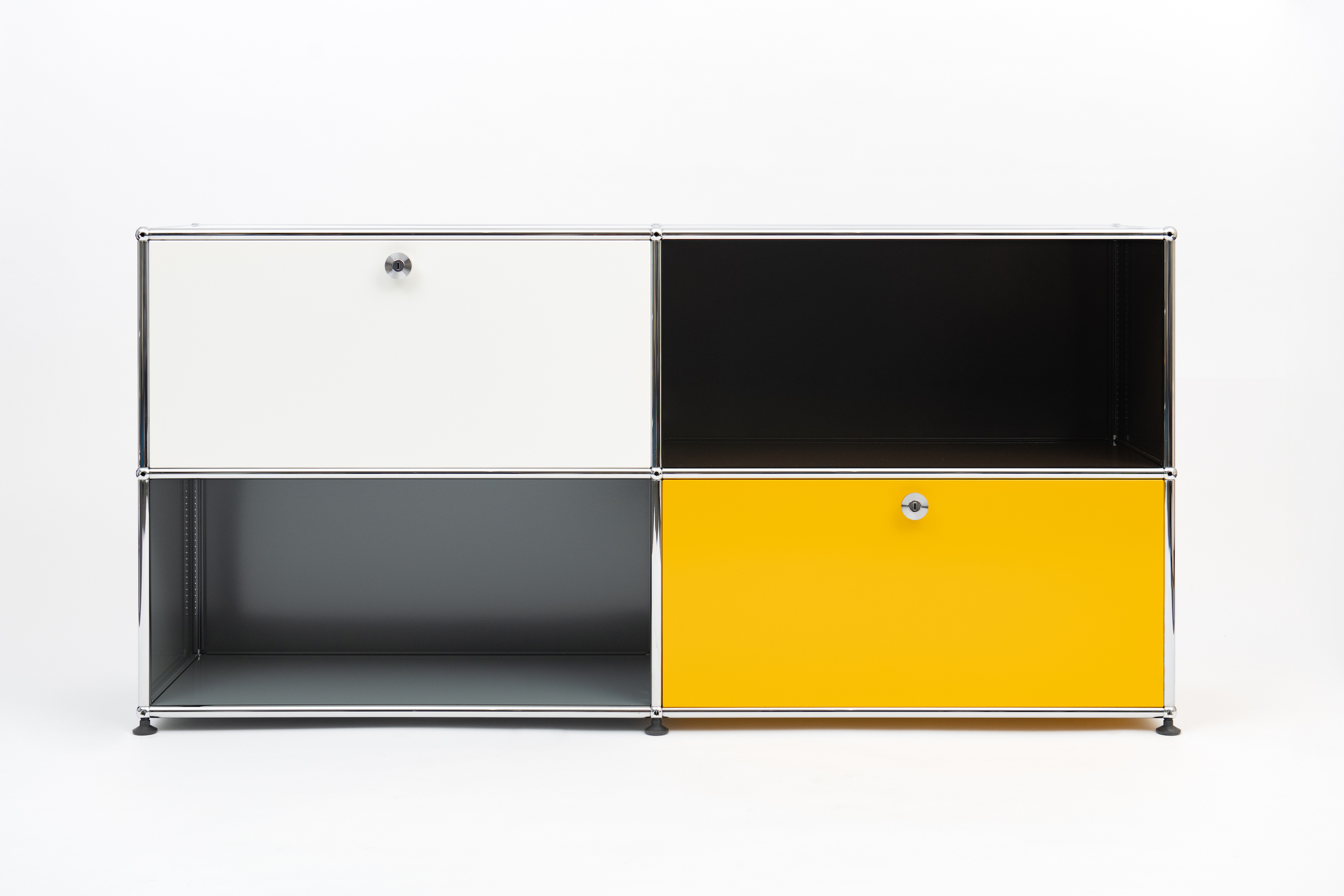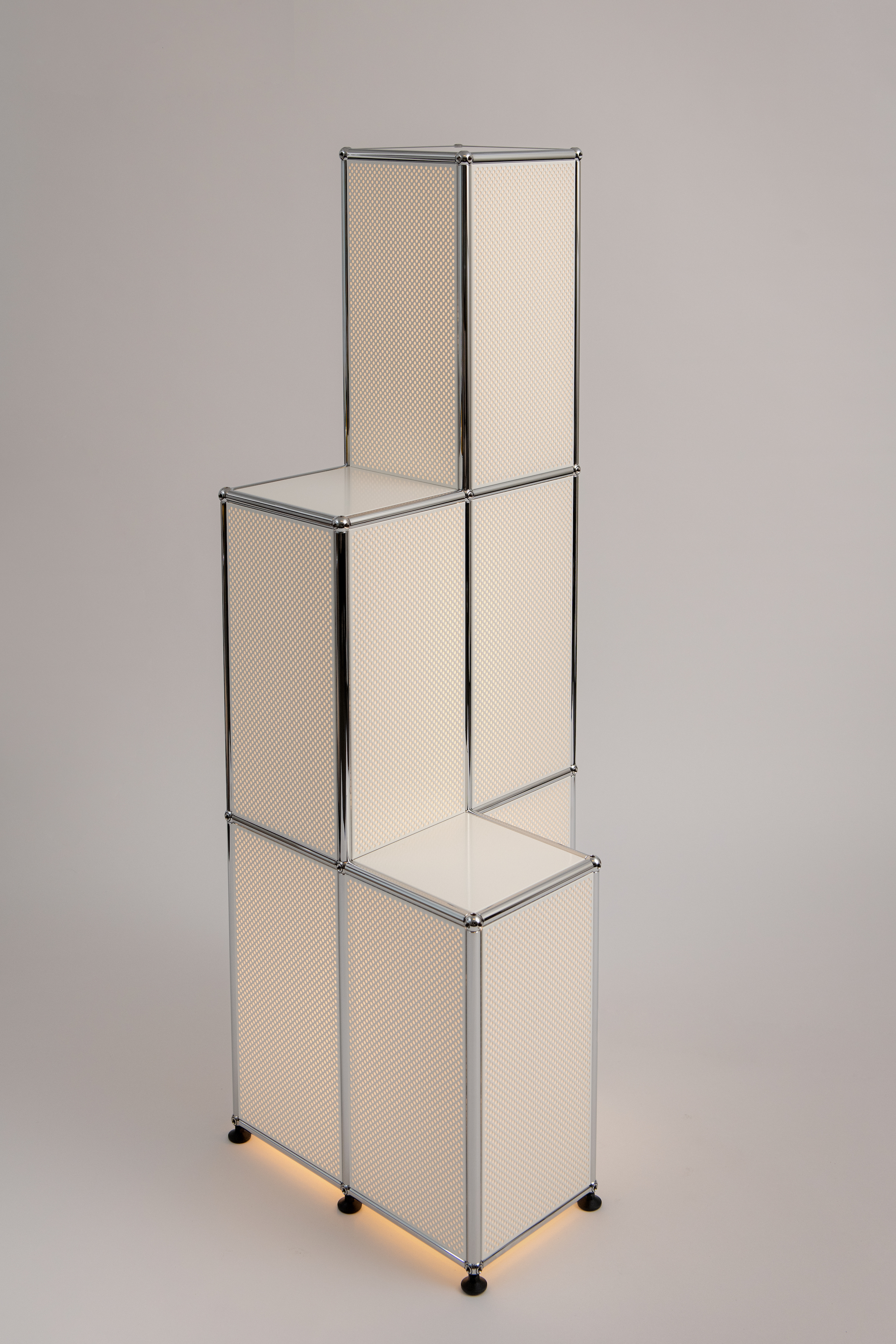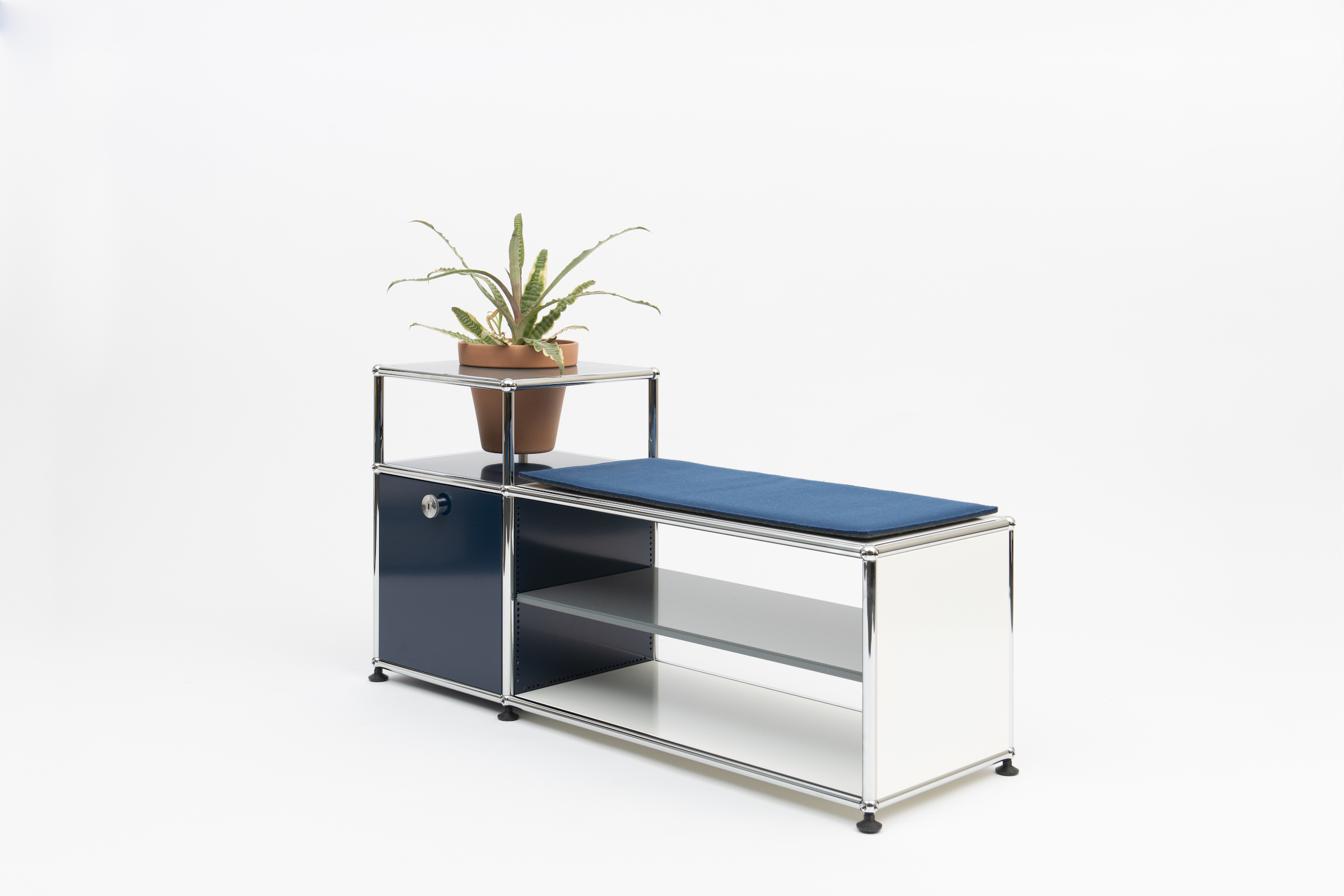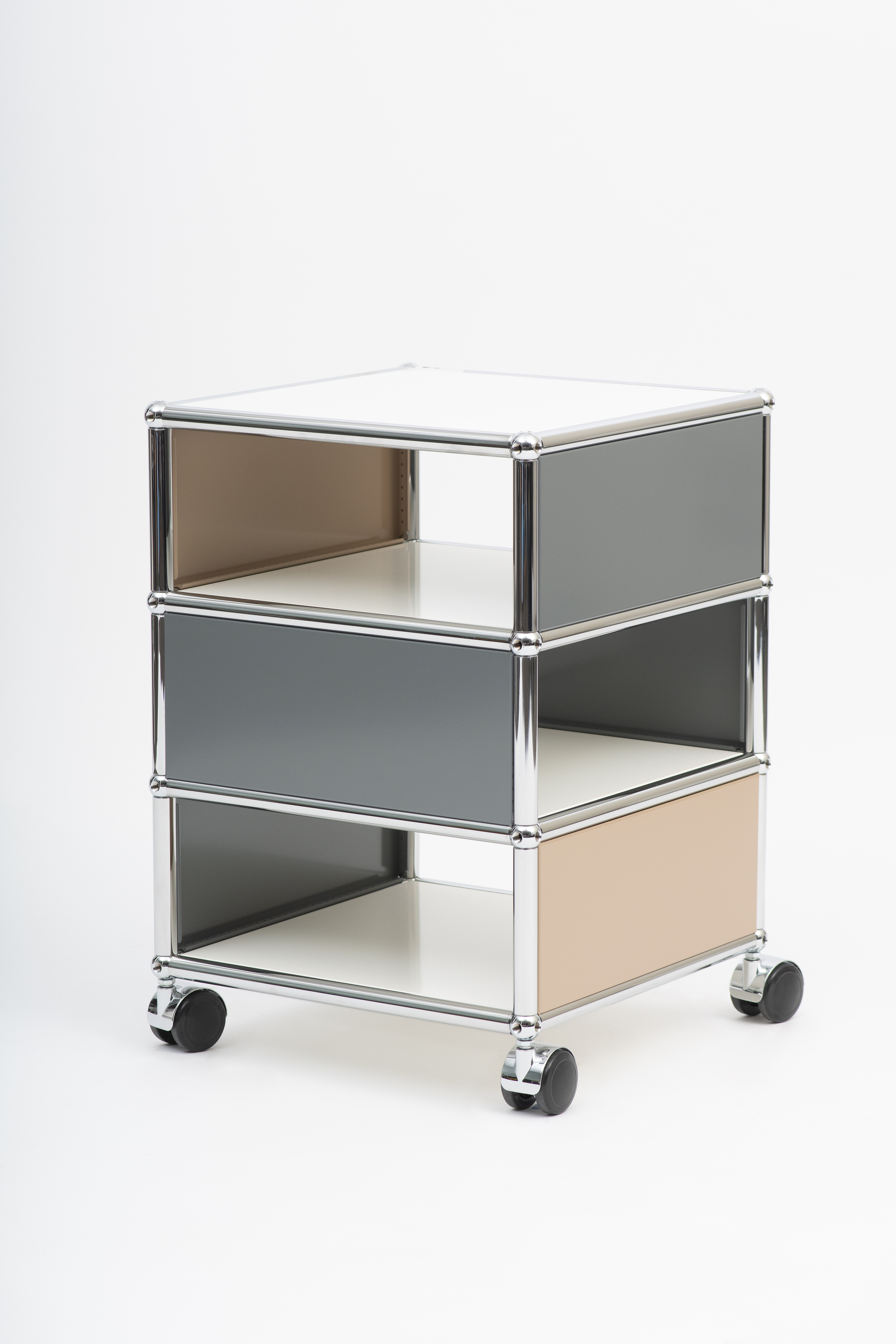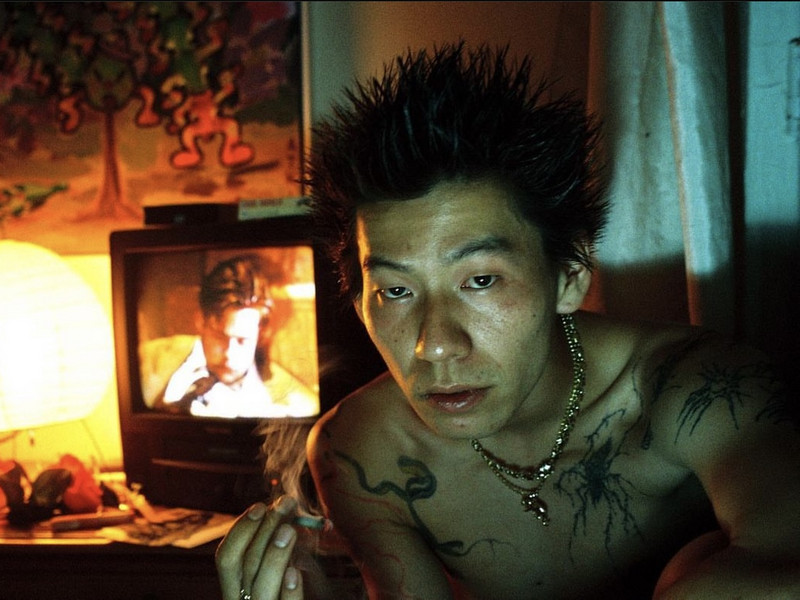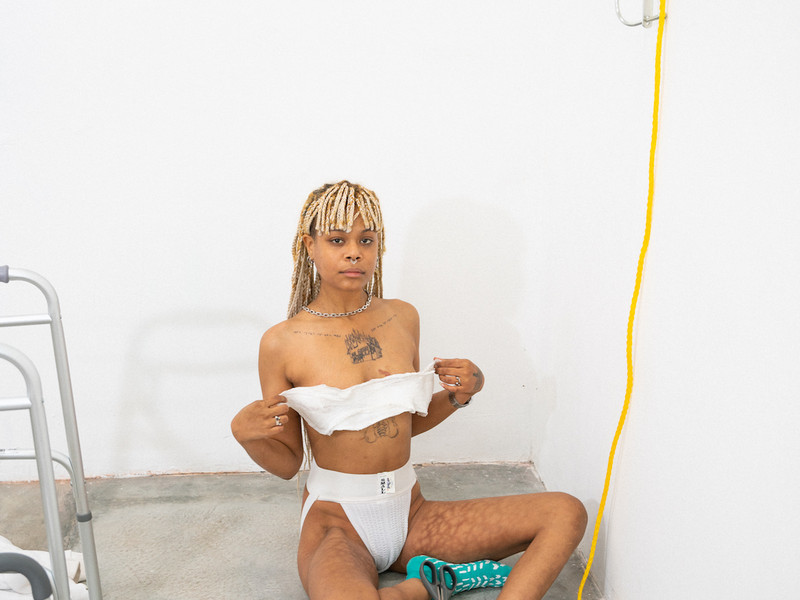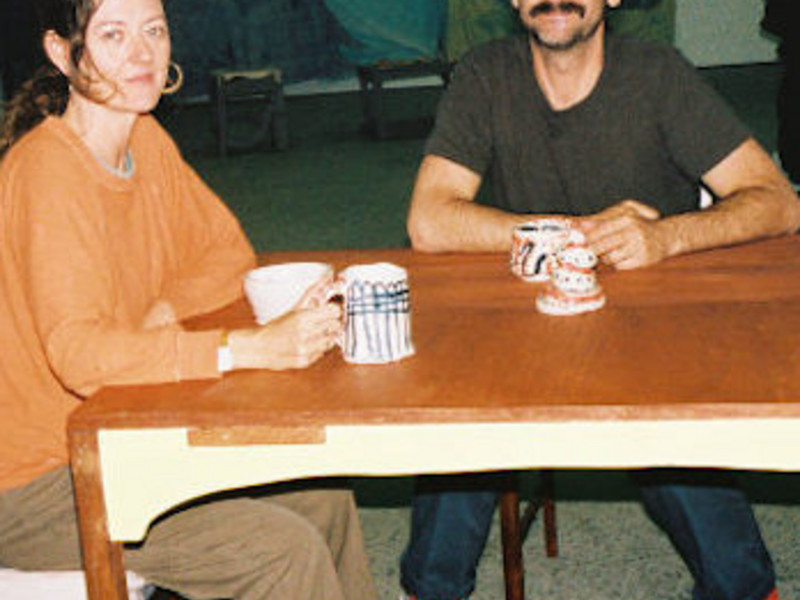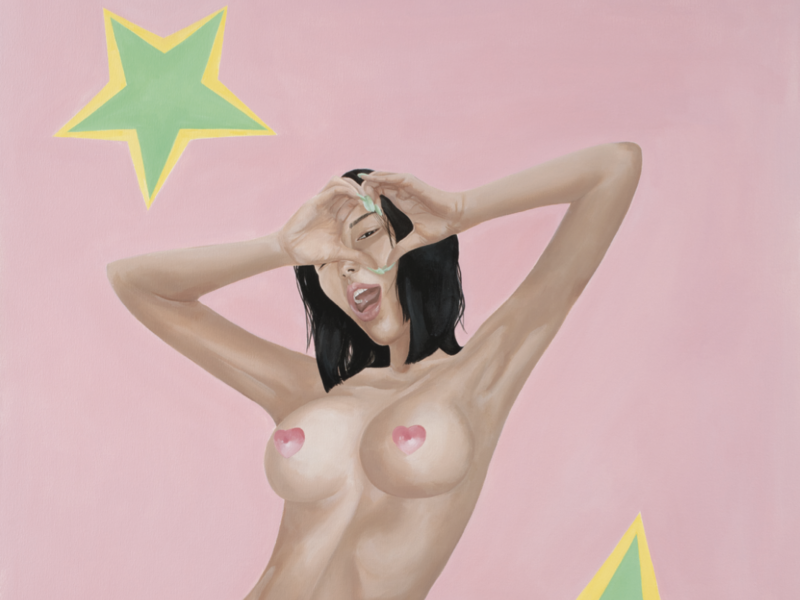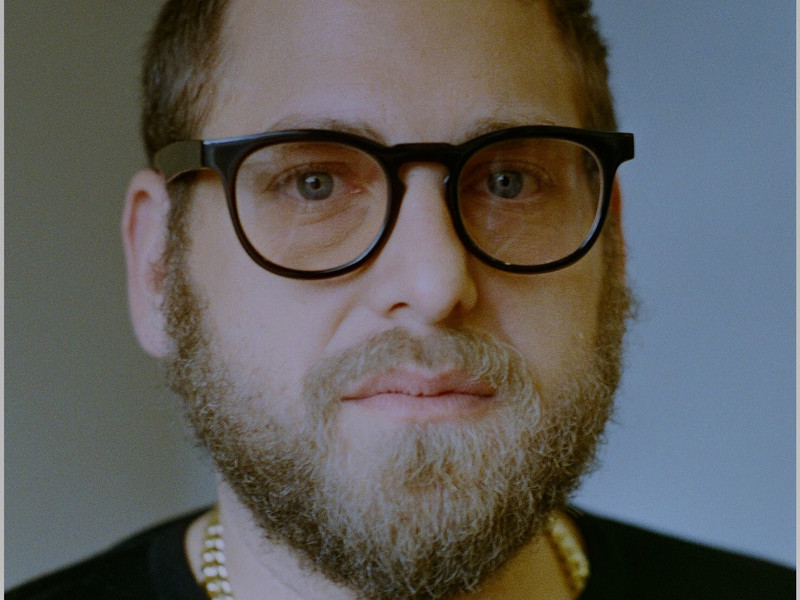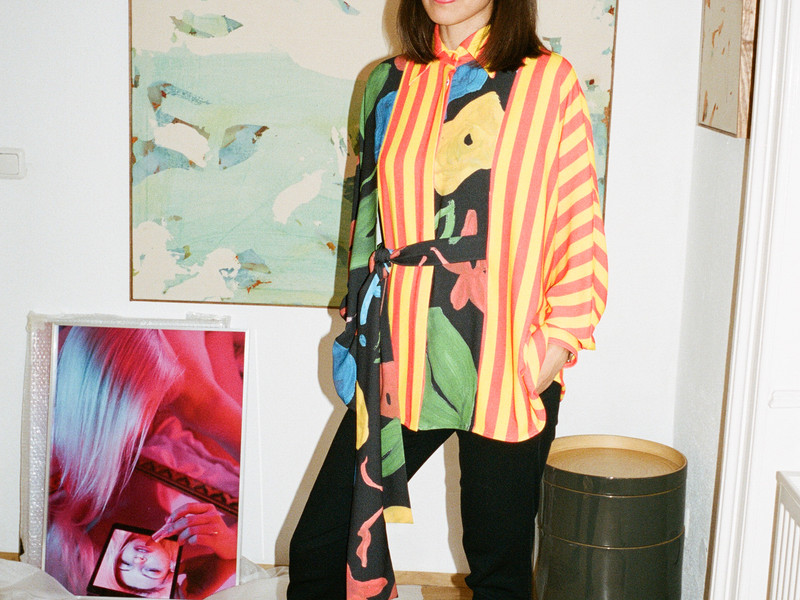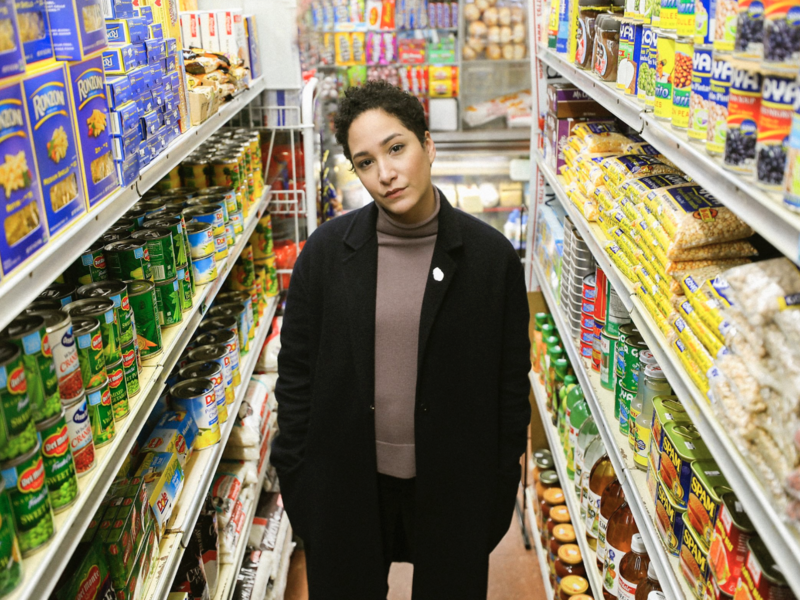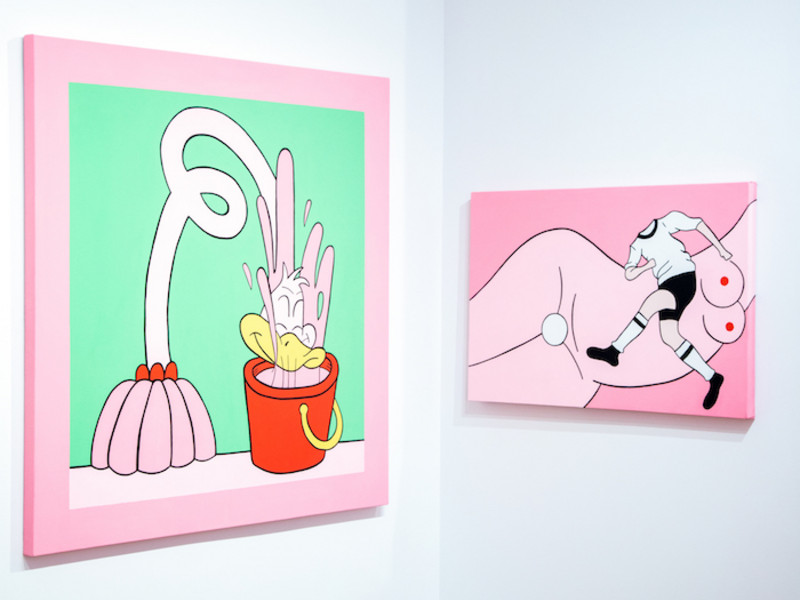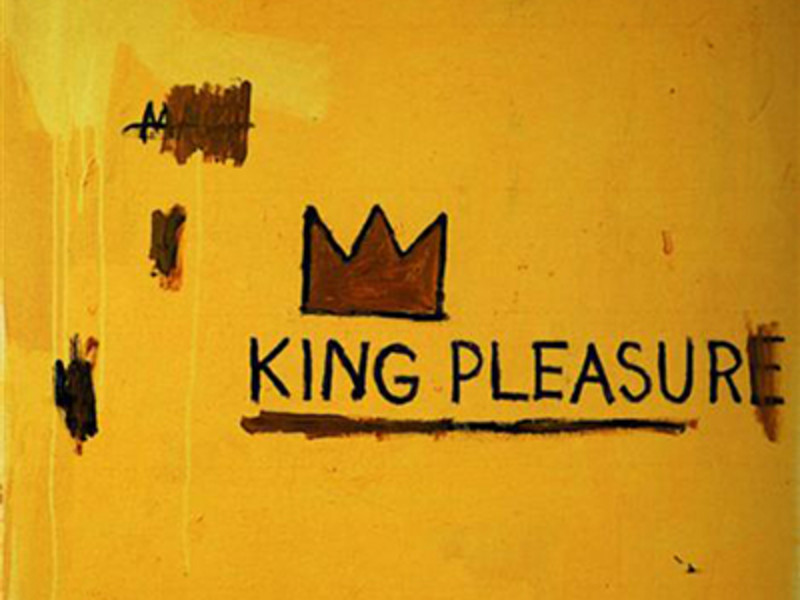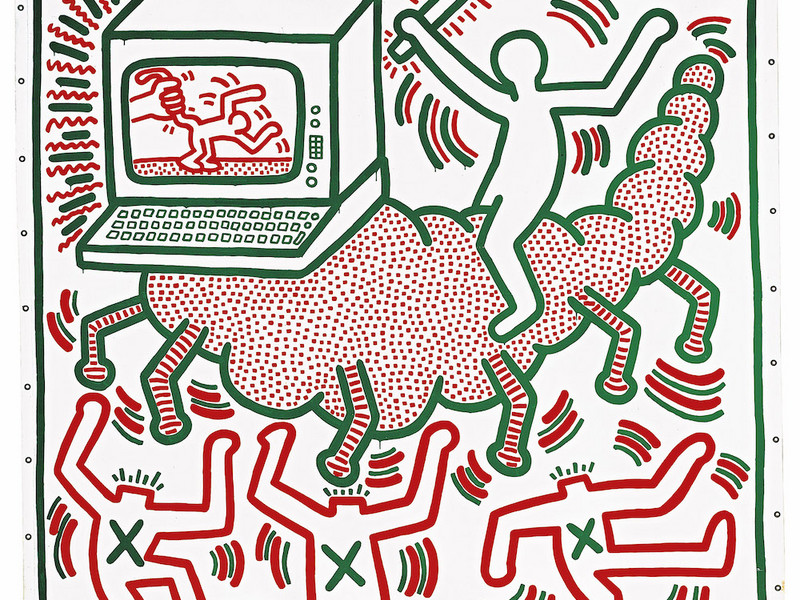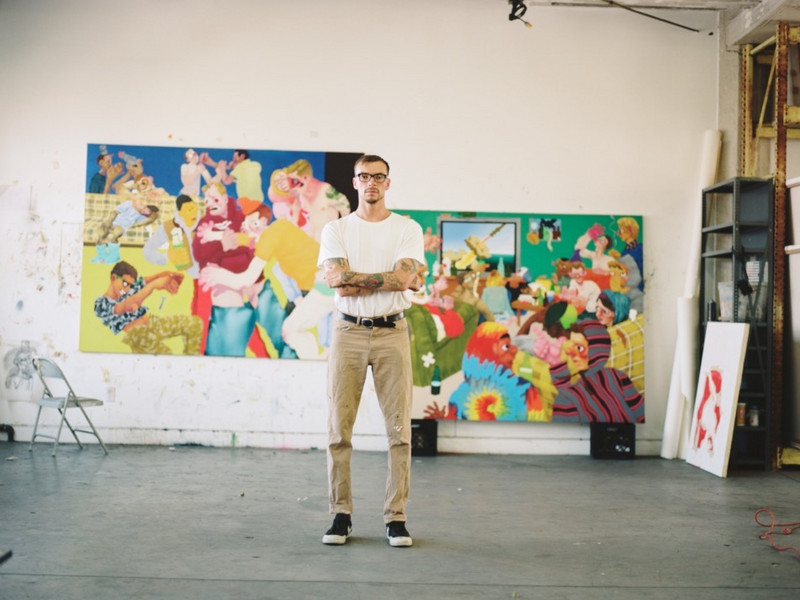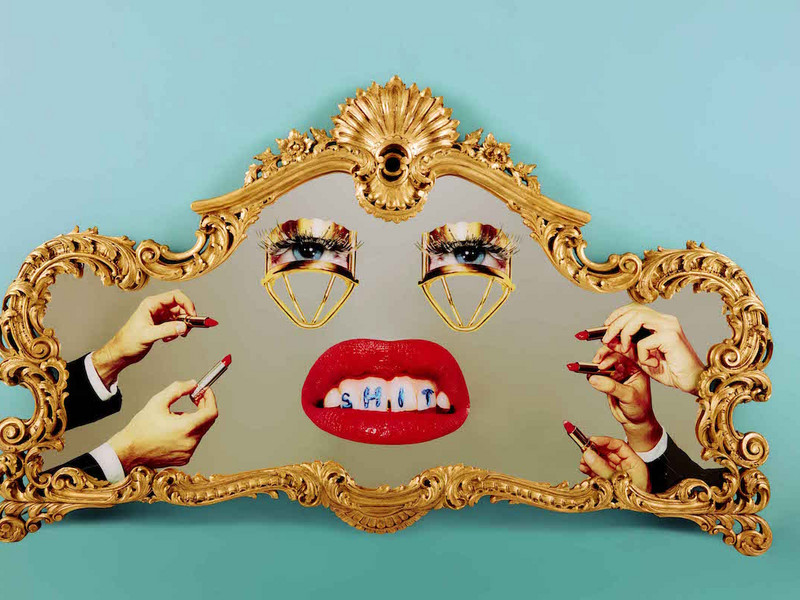One and the Same
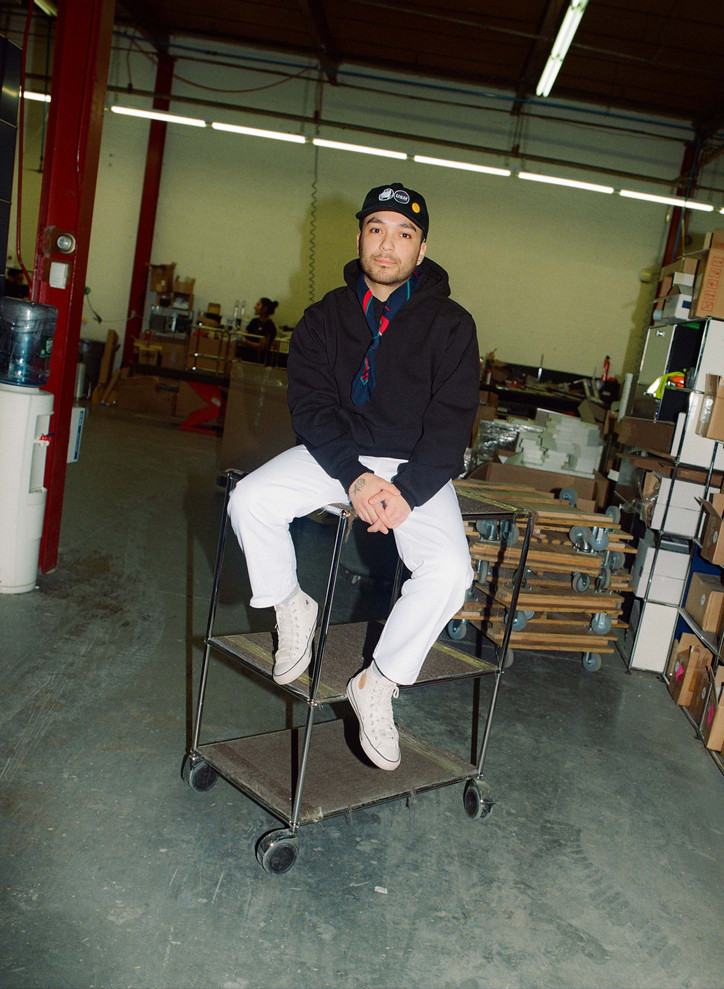
After the opening last Friday at the USM NY showroom in SoHo, office had a chance to sit down with Noel to reflect on what it was like collaborating with a furniture house that has been providing timeless modular furniture designs for half a century.
Let’s start at the beginning. How did you come to design and get started with your current practice?
Well, I've always made things; I went to school for art direction and design and got into graphic design in my early twenties. I still do it, but in college, I also had a few woodshop classes and that kind of changed my life. I got to really understand the tools I was working with, and then I ended up working at the woodshop. That's where a lot of my resourcefulness started because I was in college and didn't really have a bunch of money to spend on materials, so I was always digging through the scrap bin of the woodshop. I was always making stuff out of whatever people threw away.
It’s still very similar to what I do now — amateur style. I was always in the woodshop. Once I graduated, I didn’t have the woodshop anymore but knew I wanted to continue what I was doing. I had to scratch that creative itch of physically making stuff, so that's when I started exploring leatherwork. The process is similar — measuring, cutting, etc., but you can do it from your house, and it gets messy but not as messy as a woodshop. So I started really diving into leatherwork with small accessories — wallets and belts, hence the name @noel.walletchain.
How has your process evolved since the start?
Recently, I’ve wanted to tap back into my college days of coming up with crazy ideas and making them happen. Now I have all this knowledge of so many different materials — wood, metal, leather. During quarantine, I really used that time to my advantage. I was like, "I have to make something every single week. At the end of the week, I have to have a finished piece." I would make deadlines for myself and then be upset if I didn't hit them. I was pretty tough on myself about that, even though nobody else knew that the deadline even existed. If I slacked off the next week, I’d double it up. I was just always making stuff.
At some point, I started running out of materials — I go to the thrift store to source most of my materials — so I started hitting every alley within three miles of my house. I would track my movement, and it was just zigzag up and down alleys. It was kind of funny. I found a pretty decent chair, and that's kind of how I started with the chair stuff. That chair definitely set it off. I embroidered a Marlboro Camel chair on the back and the seat. After that, I became addicted to finding chairs, which slowly introduced me to furniture design. Whenever I do anything, if I'm actually interested, I go pretty hard on it.
What's the most important part?
Doing what I do, knowing how to do that, and knowing the history of what I’m working on is super important to me. I quickly became a furniture nerd about everything. I'm taking things apart and thinking about what that designer was thinking about and deconstructing it and seeing how this thing was fabricated or assembled. I learn a lot from deconstructing.
I’m also thinking about the other chair you did, “Choice of Champions.” You take something that had a particular function and give it a completely new one.
Yeah, that was a punching bag I found in my alley, actually right down the street... I was walking my dog and was like, "Whoa, perfect." It was after it rained too, so the punching bag weighed like 200 lbs, so I was in the alley with this dirty, wet punching bag, throwing all the stuff from the inside into the dumpster. I was like, "Dude, this sucks." But I was like, "The fabric is perfect." I like mixing the two worlds of high-end, super-expensive design and adding an element of grit and manual labor. Everything that I use is an everyday kind of object. I'm fascinated with production lines, especially the people who are assembling as their full-time job and don't think twice about it.
For USM, when I went to the warehouse, it was really cool to see where it all happens. They don't fabricate there, but they assemble everything there. It’s where everything in the US gets shipped out from. I'm very process driven, so I kind of geek out when I get to see the behind-the-scenes, you know?
What was it like working with a company as well-known as USM, considering that your practice has mostly been a solo act thus far?
USM was really awesome to work with. Everyone was asking me how they approached me. I was like, "Honestly, I just walked into the store." I'm from Chicago, so when I was in NYC, I asked my friend whether there was a USM store nearby and it was right there. I went in, started talking with them, and making art came up, and had a thought that I could work with them if I played my cards right. I showed them the RIMOWA piece that I did with MOBA for Art Basel a couple of years ago and then the seatbelt chair, and I was like, "I would really love to work with you guys one day. That'd be sick." Little did I know that the NYC showroom runs the whole country.
It kind of just jumped off from there, which was surreal because USM isn't cheap. It was crazy engraving on USM panels. Getting materials from the actual source has always been a dream. I got that with RIMOWA, which was great. It's the same feeling of, "Wow, this is completely unfabricated, raw materials that I get to do whatever I want with it." But with USM, it's crazy because it's modular furniture, so the options are limitless. There's no end to what you could do with it. It was like working with a blank page. I worked very closely on the team strategizing not only on design but on what sells the best. I learned a lot about sales strategizing, which I’ll definitely use in future projects, because a lot of it is retail, not just for the artwork. People are considering whether they want to buy this and keep it forever potentially.
I was working on this project for close to a year. I worked on all the leatherwork throughout. They even gave me a perforated trash can, saying "You could probably do something cool with this. Here you go."
I was going to ask about that one.
I decided to weave it with leather, which took me three days to do. My hands were really raw. They were dry and bleeding by the end, but it came out cool.
You made everything by hand, right?
Yeah, except for the bigger furniture, like the credenza. I just designed those and came up with the colorways. The vests, the trashcan, the magazine holder, all of those were tied into this idea of repurposing products that they either just had in the showroom or don't sell that much.
There are 16 vests, and I handmade all of those. That was an experience, making all those vests and how limited they were. And sourcing the fabric. I'm picky as hell with everything I use, so it had to be exactly what I envisioned. Conceptually, the whole wearable tie-in was that in fashion houses, they wear white lab coats, so I made these vests like, "This is what they would wear if USM was a wearable fashion brand." That was the idea, and then matching the vests to the units I designed.
What was it like coming up with the colorways for all the pieces, especially those that will be used as furniture?
Again, I worked really closely with the team. I'm always thinking of the people, what would people actually want in their house, and even what is something I would personally have in my house. I couldn’t pick a color so I picked five colors. I thought about what it's like seeing a car with a different colored door and knowing that person found that door in the junkyard.
I also wanted it to be subtle, having muted areas with pops of color. Having one drawer be yellow and then the rest tan and white. A huge yellow credenza would dominate a space and delegate the rest of the layout, that’s not what I’m trying to do. Visually, if you can reach a good balance, then you're good; you are in a safe zone. That unit you bought is different enough, but it doesn’t clash, it just pops.
Could you tell me a bit about the centerpiece I Can See My House From Here? How did that come about?
That was one of my original ideas when we first started rendering. Again I had to unlearn this idea of frugality working with USM. Usually, when I make art, everything is coming out of my pocket, so I’m always trying to be as economical as possible. USM just let me go wild. Originally, I Can See My House From Here was going to be triple the size. I wanted it to be a call back to Chicago because I live there. After conceptualizing this wearable aspect, I steered clear of going so big but still wanted people to know I was from Chicago. Mimicking the Sears Tower silhouette can very easily be corny and tacky. If you do it right, like when Virgil did his crazy skyline vest, that was sick. That was a big inspiration. I was like, "All right, Virgil did it maximalist. That was dope, and it looked cool as shit." I was like, "All right. How can I do it? Have the same effect, but—
Minimalist.
Yeah, exactly. That was a fun piece to make. I didn't know if it was going to happen because they've never built a piece like that in terms of the lighting, but we tried it, did some test runs, and it worked perfectly. I was like, "Sick, dude. This thing is fucking awesome. It's going to look so cool." The name came from what it’s like to be in the Sears Tower high up, mapping out where you are — where your house is, and where your friends live. You know what I mean? And then double entendre, I guess, of having this Chicago-inspired piece in New York as a piece of home. I'm like, "Oh, I'm in New York. I can see my house from here. I'm leaving a piece that's Chicago-inspired in New York, a city I love and visit all the time."
There are also those furniture pieces with the potted panel. How did those come about?
So USM has that as an option. It’s a custom USM pot made to fit into that panel. I kind of unintentionally always incorporate plants in my work if I can. This idea of my work actually living. I made a bootleg Louis Vuitton vase once, and I was like, "This is cool in terms of function, what it's made out of, and that it's something that has a life of its own because it's a vase.” You're always buying new flowers for that specific vase. Again, the life aspect of it is really interesting to me. That piece is called Take Off Your Shoes and Water Your Plant.
My idea was to have it as the entryway bench where you sit down and take your shoes off or put them on, whatever, because you do that most days, and it would prompt you to water your plant because it's right there. That was a fun piece to be able to incorporate something that I've already been adding in pretty organically, so it was dope. That's my favorite one.
What was it like working with both mobile and stationary bases?
A few of the pieces in the show were inspired by some vintage designs that I personally use. The wheeled shelving cart that I did was based on a trolley by Joe Colombo that I have at my studio. The one I made is called When I Move, You Move because I literally drag the trolley I have at my studio around when I'm painting on a canvas or have my tools on it. It’s behind me the whole time. I wanted it to be extremely functional, with this idea of mobility and maximizing its functionality and using it as a tool more than anything. Almost like it’s alive and working with you.
What was the opening like last night?
I mean, it was a lot of work, but it was great. I got in on Wednesday morning, came straight to USM, and didn't leave till 9:30 p.m. I was here from 12:00 to 9:30 p.m. I was in the basement where I'm right now and still sewing the vests at 9:30 at night, the day before the show. It wasn't stressful because I knew I was going to get it done, but I had to make some alterations to all of them. It was definitely down to the wire in the best way possible where I was like, "All right, cool. We're going to get everything done right on time."
The opening was fantastic. I got to meet many Instagram friends and people I'm a fan of — designers, creatives, and people I didn't know followed my work. It was cool interacting with everyone, meeting people, and just seeing people interact with what I made. I spend so much time with what I make that I get so used to it. When people are like, "Oh, you hand engraved this?" I'm like, "Yeah." A lot of people think I have things made, especially with garments. I'm like, "No, I made everything, literally everything. I was very close to everything that everyone saw. The turnout was fantastic. I was really, really grateful all the way around, just the opportunity, the city, not being from New York, and having the crowd that came out, it was awesome.
Do you have any projects coming up this year that you can tell us about?
I have some stuff happening back home but nothing that's as work-intensive as this. I'm going to be doing some collabs with some friends on garment pieces. A friend of mine in Chicago runs this thing called Print Object. Her name's Anna. She's giving me this opportunity to make whatever I want, pretty much, and then have it available to sell online, which I usually don't do. Not intentionally; I just have to figure out how to make a web store, really. I'm excited I've also always wanted to do this conceptual sculptural base type thing. It's just some one-off things, but yeah, nothing too crazy. I'm probably going to take the month off.
Yeah, I mean, after this, you should.
Yeah, I definitely need to chill out for a second.
